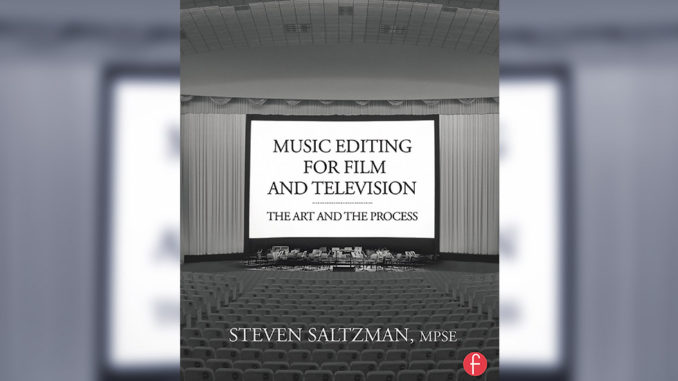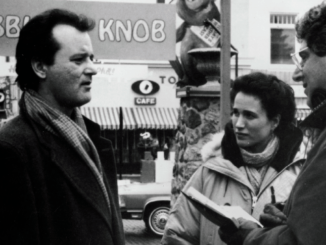
by Betsy A. McLane
Steven Saltzman’s fine book might well be subtitled “Everything You Ever Wanted to Know about Music Editing.” “The Art and the Process” is just as apt a subtitle, however, because in addition to every technical nut and bolt of music editing with Avid Pro Tools, it gives ample attention to the artistry and personal character required to master this specialized profession.
The author has been a music editor for 18 years and, as a certified Pro Tools instructor, has created and taught many music editing courses. The book’s core is a thorough understanding of the detailed ins and outs of Pro Tools. It clearly explains what appears on a monitor screen and illustrates what buttons need to be pushed to move from coding a cue through conforming to data delivery of media.
Music Editing for Film and Television is a recommended text in any type of sound or picture editing training, and is also a must-read for film or TV music composers. Joining the large catalogue of Focal Press’ books on every aspect of filmmaking, this book should be part of every post-production library. Readers not already following it might consider checking out the publisher’s website, www.masteringfilm.com, where real-time tweets mix with video tutorials and views from the field.
It would be a mistake to consider Music for Film and Television Editing as a manual; let Avid supply that. Saltzman incorporates extensive interviews with various people who are key to all phases of pre-production, production and post. These insider insights are provided by post-production supervisor Christopher Kulikowski, music supervisor Bob Bowen, composer William Ross, re-recording mixer Gary Bourgeois, CAS, music editors Joseph S. Debeasi, MPSE, and Carli Barber, and picture editors David Rennie, ACE, and Kevin Tent, ACE, among others. There is also a timely Q&A with sound editor/designer Scott Gershin, MPSE, along with several relevant essays by other professionals.
These interviews follow the same general format, an approach that provides an array of opinions on the same topic. A music supervisor says, “A music editor’s main function is to help sculpt the tone and direction of the music by cuttings songs and score to picture under the guidance of the music supervisor, the composer, the director, the picture editor, the producers and the studio.” While a film editor remarks, “What a music editor presents [in a temp track] so often is what winds up being in the final film. It drives some composers crazy, I know. They often hate having the music figured out before they show up.”
Another issue considered in Music Editing for Film and Television is the shifting position of music editors (and all post personnel) as film and television budgets shrink and people are expected to take on increasing workloads.
Saltzman emphasizes why it is critical that a music editor must carefully and professionally navigate the intricacies of many demanding “masters” at the same time while doing the best work possible. Acknowledging that every production situation is different, he emphasizes the importance of building working relationships with every member of the team. Rennie comments,
“It’s not necessarily going to be the music “editor’s place to decide whether it’s a collaboration, any more than it’s the editor’s place to decide whether it’s a collaboration with the director — they lead the dance… and you hope that you have a picture editor who doesn’t have an ego problem.”
So central is creating a harmonious workflow to the music editor’s role that Saltzman provides sample scenarios for various stages of post-production. One example is the pressure-laden task of fixing sound edits on stage during the final dub of a movie — possibly while the entire mix comes to a standstill and everyone listens to the edit. Various technical solutions to such problems are described along with great personal advice: “Keep calm. Keep quiet… How you handle yourself on that stage shows all your peers and bosses and future colleagues how professional you are.”
Another issue considered in Music Editing for Film and Television is the shifting position of music editors (and all post personnel) as film and television budgets shrink and people are expected to take on increasing workloads. Saltzman consistently makes points about the differences between big- and low-budget productions, and tries to reconcile how artistry and economy can co-exist. Underlying these facts of 21st-century moviemaking, he subtly points out what is lost in the rush.
Few welcome circumstances such as composers who are asked to edit their own score, picture editors who must create their own temp track (when they would prefer not to do so), the slashing of post-production schedules to make up for production delays, and the time demands of producers who want changes made right up to and occasionally even after release dates. He compares these current trends with older studio practices, but does not dwell in any nostalgia.
Someone else should write a history of film and television music editing, but for the present, Steven Saltzman has written the book that defines his field.






